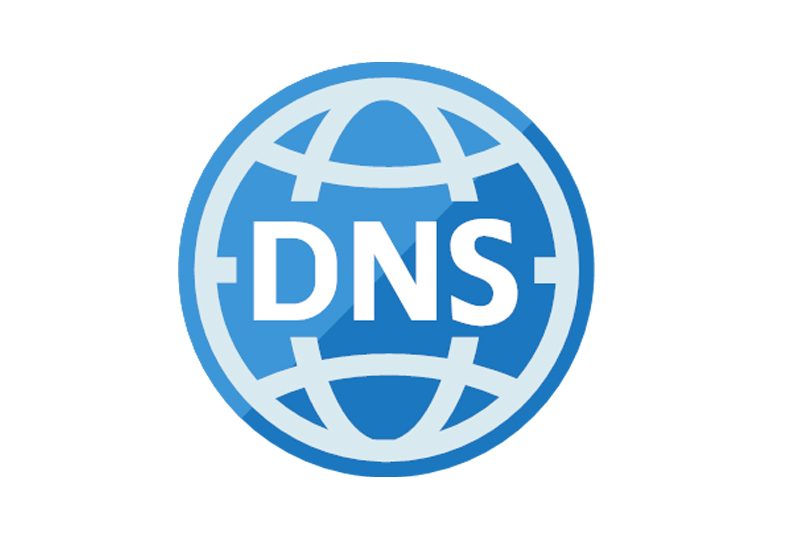IPTV (Internet Protocol Television) is a digital television broadcasting method that uses internet protocols to deliver TV content over IP networks. Unlike traditional television services that rely on cable or satellite transmission, IPTV streams content through internet connections. This technology enables viewers to access a wide range of programming on various devices, including smart TVs, computers, and mobile devices, offering greater flexibility and personalization in content consumption.
NAT (Network Address Translation) is a critical networking technology that facilitates the communication between devices on a private network and the public internet. It works by translating private IP addresses used within a local network into a single public IP address for external communication. In the context of IPTV, NAT plays a crucial role in enabling multiple devices within a household to access IPTV services simultaneously using a single public IP address.
Proper configuration of NAT settings on a router is essential for optimal IPTV performance. Incorrect or suboptimal NAT settings can lead to various issues, such as buffering, video freezing, or connection drops. To ensure a smooth IPTV experience, users should configure their router’s NAT settings according to their IPTV service provider’s recommendations.
This may involve adjusting port forwarding rules, enabling UPnP (Universal Plug and Play), or implementing other specific NAT configurations to optimize the flow of IPTV traffic between the local network and the service provider’s servers.
Key Takeaways
- Understanding IPTV and NAT Settings:
- IPTV relies on NAT (Network Address Translation) settings to function properly.
- NAT allows multiple devices to share a single public IP address.
- Configuring NAT Settings on your Router:
- Access your router’s settings and enable UPnP (Universal Plug and Play) for IPTV.
- Forward specific ports for IPTV traffic to ensure smooth streaming.
- Setting up DNS for IPTV:
- Use the recommended DNS servers provided by your IPTV service provider.
- Configure your router to prioritize IPTV traffic for DNS resolution.
- Managing Firewall Settings for IPTV:
- Create firewall rules to allow IPTV traffic to pass through without interference.
- Ensure that the firewall does not block essential IPTV ports.
- Using DHCP for IPTV Devices:
- Set up DHCP reservations for IPTV devices to ensure they always receive the same IP address.
- This helps in maintaining consistent connectivity for IPTV devices.
- Optimizing NAT Settings for IPTV:
- Adjust NAT timeout values to prevent IPTV streams from being interrupted.
- Consider using a dedicated VLAN for IPTV traffic to optimize network performance.
- Troubleshooting NAT Settings for IPTV:
- Check for any conflicting port forwarding rules that may disrupt IPTV traffic.
- Monitor NAT logs for any errors or issues that may affect IPTV connectivity.
Configuring NAT Settings on your Router
Accessing Your Router’s Settings
To configure NAT settings on your router for IPTV, start by accessing your router’s settings. To do this, enter your router’s IP address into a web browser and log in with your administrator credentials. Once logged in, navigate to the NAT settings section, which may be labeled as “Port Forwarding,” “Virtual Server,” or “NAT/QoS” depending on your router model.
Creating a Port Forwarding Rule
Next, create a port forwarding rule for the specific ports used by your IPTV service. These ports are typically provided by your IPTV provider and may vary depending on the specific service you are using. By creating a port forwarding rule, you are telling your router to direct incoming traffic on these ports to the IP address of the device running the IPTV service. This ensures that the IPTV traffic is properly routed to the correct device within your network.
Enabling UPnP for Simplified Configuration
In addition to port forwarding, you may also need to enable UPnP (Universal Plug and Play) on your router to allow IPTV devices to automatically open the necessary ports for incoming traffic. UPnP can simplify the process of configuring NAT settings for IPTV, as it allows devices to communicate with the router and automatically request port forwarding as needed. However, it is important to note that enabling UPnP may pose security risks, so it is essential to weigh the benefits against the potential vulnerabilities when configuring NAT settings for IPTV.
Setting up DNS for IPTV
In addition to configuring NAT settings, setting up DNS (Domain Name System) for IPTV is another important aspect of optimizing the delivery of IPTV services. DNS is responsible for translating domain names (e.g., www.example.com) into IP addresses that can be used by devices to communicate over the internet. When it comes to IPTV, having a reliable and fast DNS server can help improve the performance and reliability of IPTV services.
To set up DNS for IPTV, you can typically do so within your router’s settings by entering the IP addresses of preferred DNS servers provided by your IPTV provider or a third-party DNS service such as Google DNS or OpenDNS. By using faster and more reliable DNS servers, you can reduce latency and improve the overall responsiveness of IPTV services, leading to a better viewing experience for users. It is also worth noting that some IPTV services may require specific DNS settings in order to function properly.
In such cases, it is important to follow the instructions provided by your IPTV provider to ensure that the correct DNS settings are configured on your router. By taking the time to set up DNS for IPTV, you can help ensure that your IPTV services operate smoothly and efficiently.
Managing Firewall Settings for IPTV
Another crucial aspect of optimizing NAT settings for IPTV is managing firewall settings on your router. Firewalls are designed to protect your network from unauthorized access and potentially harmful traffic from the internet. However, overly restrictive firewall settings can sometimes interfere with the delivery of IPTV services, leading to performance issues such as buffering or loss of connection.
When managing firewall settings for IPTV, it is important to ensure that the necessary ports used by your IPTV service are open and accessible. This can typically be done within your router’s settings by creating firewall rules that allow incoming traffic on specific ports associated with your IPTV service. By opening these ports, you are allowing the IPTV traffic to pass through the firewall without interference, which can help improve the overall performance and reliability of IPTV services.
In addition to opening specific ports, you may also need to consider enabling DMZ (Demilitarized Zone) for the device running the IPTV service. Enabling DMZ effectively places the designated device outside of the firewall’s protection, allowing all incoming traffic to reach the device without any restrictions. While this may pose security risks, it can be a useful troubleshooting step for identifying whether firewall settings are causing issues with IPTV services.
By carefully managing firewall settings for IPTV, you can help ensure that the necessary traffic is able to pass through your network without interference, leading to a more seamless and enjoyable viewing experience for users.
Using DHCP for IPTV Devices
DHCP (Dynamic Host Configuration Protocol) is another important consideration when it comes to optimizing NAT settings for IPTV devices within your network. DHCP is responsible for automatically assigning IP addresses and other network configuration settings to devices within a local network. When it comes to IPTV devices, using DHCP can help simplify the process of managing IP addresses and ensuring that devices are able to connect to the network and access IPTV services without any manual configuration.
By enabling DHCP on your router, you can ensure that IPTV devices are automatically assigned IP addresses and other network settings when they connect to the network. This can help streamline the process of setting up and managing IPTV devices within your network, reducing the need for manual configuration and potential errors. It is also worth noting that some IPTV services may require specific network settings or configurations in order to function properly.
In such cases, it is important to follow the instructions provided by your IPTV provider to ensure that DHCP settings are configured correctly on your router. By using DHCP for IPTV devices, you can help simplify the process of connecting and managing devices within your network, leading to a more efficient and user-friendly experience for all users.
Optimizing NAT Settings for IPTV
Keep Your Router’s Firmware Up to Date
Ensuring that your router’s firmware is up to date is crucial for optimizing NAT settings for IPTV. Router manufacturers regularly release firmware updates that include bug fixes, security patches, and performance improvements that can help optimize NAT settings for IPTV.
Prioritize IPTV Traffic with Quality of Service (QoS)
Prioritizing traffic for IPTV services within your network is another essential best practice. Many modern routers offer Quality of Service (QoS) features that allow you to prioritize certain types of traffic over others. By prioritizing IPTV traffic, you can ensure that it receives preferential treatment within your network, leading to a smoother and more reliable viewing experience for users.
Manage Network Bandwidth and Capacity
It is also vital to consider the overall bandwidth and network capacity available within your network. If multiple devices are competing for bandwidth while using IPTV services, it can lead to performance issues such as buffering or loss of connection. By optimizing your network’s bandwidth and capacity, you can help ensure that there is enough resources available to support uninterrupted IPTV services.
By following these general best practices and considering factors such as firmware updates, QoS prioritization, and network capacity, you can help optimize NAT settings for IPTV and ensure a more seamless viewing experience for all users.
Troubleshooting NAT Settings for IPTV
Despite careful configuration and optimization of NAT settings for IPTV, issues may still arise that require troubleshooting. When troubleshooting NAT settings for IPTV, there are several steps you can take to identify and resolve potential issues. One common troubleshooting step is to check for any conflicting port forwarding rules within your router’s settings.
If multiple devices are using conflicting port forwarding rules for the same ports, it can lead to issues with accessing IPTV services. By reviewing and adjusting port forwarding rules as needed, you can help ensure that traffic is properly routed to the correct devices within your network. Another troubleshooting step is to check for any potential conflicts with other network devices or services.
For example, if other devices within your network are consuming a large amount of bandwidth or causing network congestion, it can impact the performance of IPTV services. By identifying and addressing any potential conflicts with other devices or services, you can help improve the overall performance of IPTV within your network. It is also important to consider potential issues with your ISP (Internet Service Provider) when troubleshooting NAT settings for IPTV.
If you are experiencing persistent issues with accessing or streaming IPTV services, it may be worth contacting your ISP to check for any potential network issues or outages that could be impacting your ability to access IPTV services. By following these troubleshooting steps and considering potential issues such as conflicting port forwarding rules, network conflicts, and ISP-related issues, you can help identify and resolve any issues with NAT settings for IPTV and ensure a more reliable viewing experience for all users.
If you’re interested in learning more about IPTV and how to set it up on different devices, you may want to check out this article on how to setup IPTV on VLC media player. It provides a step-by-step guide on how to configure VLC media player to stream IPTV channels. This can be a useful resource for those looking to expand their IPTV viewing options beyond traditional set-top boxes.





